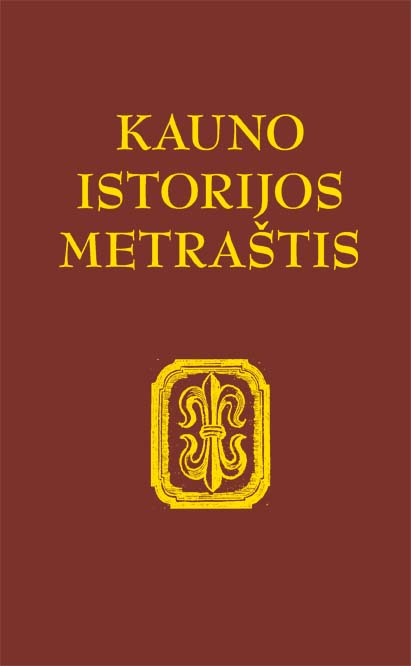Pažaislio prie Kauno ir Antakalnio prie Vilniaus fundacijos: mecenatysčių panašumai ir skirtumai XVII a. antrojoje pusėje
The Foundations of Pažaislis near Kaunas and Antakalnis near Vilnius: The Similarities and Differences of the Art Patronage on the Second Half of the 17th Century
Author(s): Mindaugas PaknysSubject(s): Cultural history, Modern Age, 17th Century, Sociology of Art
Published by: Vytauto Didžiojo Universitetas
Keywords: The Grand Duchy of Lithuania; The nobles; Families; Pac; Foundations; The patronage; Monasteries;
Summary/Abstract: In the Grand Duchy of Lithuania in the second half of the 17th century main power, income and significant possessions were concentrated in the hands of the Pacas family. The most magnificent Baroque buildings in the Grand Duchy of Lithuania were built at that time the Camaldolese Monastery of Pažaislis and the Monastery of the Canons Regular of the Lateran in Vilnius Antakalnis. The first one was financed and supervised by the Chancellor of the Grand Duchy of Lithuania, Kristupas Zigmantas Pacas (1621– 1684), and the second one was built by the Grand Hetman of the Grand Duchy of Lithuania and the Voivode of Vilnius, Mykolas Kazimieras Pacas (1624–1682). Despite the fact that both constructions were carried out by members of the Pacas family, and that they were carried out at the same time, the artistic solutions were quite different. The Pažaislis Church is characterised by its unique architecture and luxurious decoration fulfilment decorated with various materials – marble, stucco, frescoes, while in the Antakalnis Church, stucco moulding predominates. The article raises the question – are these buildings really so far and different from each other? In his will of 1665, K. Z. Pacas appointed M. K. Pacas as his main inheritor. There is no doubt that he trusted his relative who would not only receive his wealth after his death, but also would complete his works. So even though M. K. Pacas was not directly involved in the construction of Pažaislis, he was well informed not only about the activities of the patron of Pažaislis, K. Z. Pacas, but also about his thoughts, ideas and plans he would have had to carry on after his relative’s death. The article expresses the idea that that this is what led to the fact that the church in Antakalnis was consciously and purposefully built differently from the one in Pažaislis. However in Antakalnis, innovations were also applied: for the first time, a stone church and monastery were built in a suburb of Vilnius, and for the first time, stucco moulding was used so extensively to decorate a whole building. Therefore, in the article the conclusions are drawn that the significant differences in the patronage of both Pacas were primarily due to the close communication between the two men and the fact that they were aware of each other’s construction in sufficient detail.
Journal: Kauno istorijos metraštis
- Issue Year: 2022
- Issue No: 20
- Page Range: 177-194
- Page Count: 18
- Language: Lithuanian

